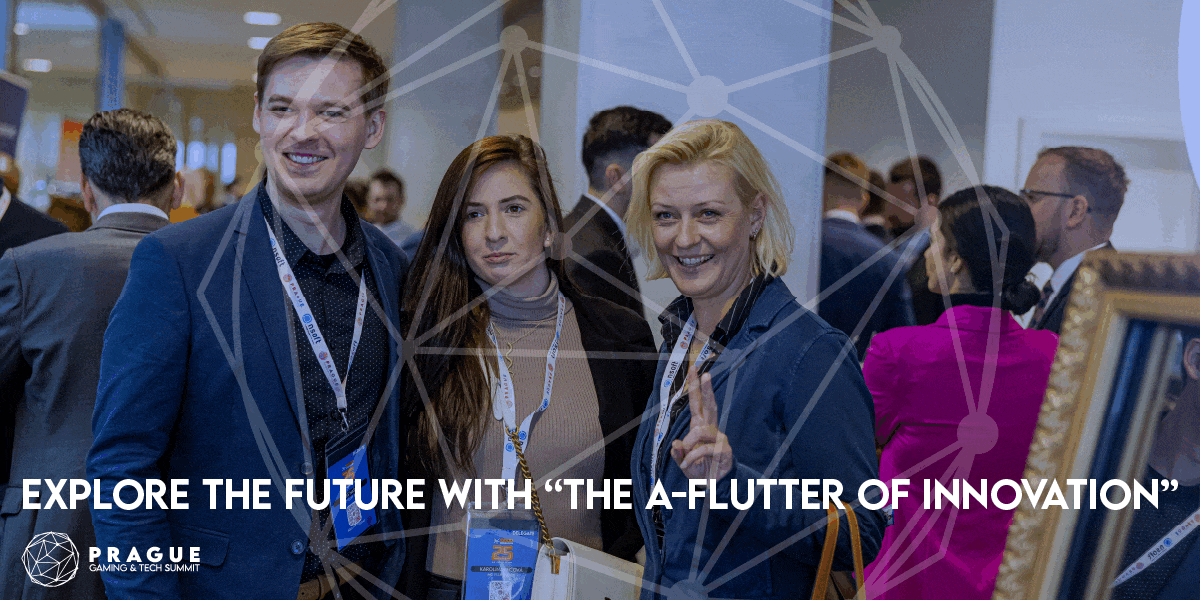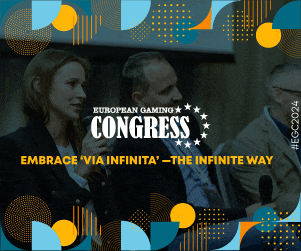Fintech PR
The Electrifying Divide in Battery Chemistries for Construction EVs

BOSTON, July 6, 2023 /PRNewswire/ — The success of electric vehicles in the construction industry will largely be determined by battery prices being low enough that the total cost of ownership is cheaper than diesel alternatives. IDTechEx’s new report, “Electric Vehicles in Construction 2023-2043“, shows that there is a battery price tipping point, under which it will be cheaper over the vehicle lifetime to operate an EV. Selecting the right chemistry then will be imperative for getting a low enough vehicle price. So why is a clear dichotomy seen between the batteries being deployed in China compared to Europe?
Electric vehicles in construction are an emerging market. Despite this, IDTechEx has built a database of more than 100 example makes and models across seven different construction vehicle categories. However, with lots of vehicles still yet to be released, only 49 database entries have confirmed chemistry information. With Europe and China being more established markets for electric construction vehicles, conclusions about battery chemistry trends from OEMs in these regions can be made. What is obvious at this early stage is that Europe heavily favors NMC, while China has chosen LFP.
Battery Requirements in Construction Vehicles
So why would one select NMC, LFP, or even lead acid, for that matter? Electrifying construction equipment is a fascinating and nuanced topic. The priorities for a battery are huge capacities at low costs. With some of these machines being gargantuan, and usually requiring concrete counterbalances to handle the massive loads they encounter, battery weight isn’t so much of an issue. Power density is also not much of a priority. Unlike electric cars, construction vehicles do not tend to have large spikes in power demand and are more likely to operate at a steady rate for a long time. As an example, the Tesla Model S has a ~60kWh battery and ~210kW motor power, meaning its battery must be able to deliver a peak of 3.5C (power divided by capacity). This is a typical requirement of road cars; hence, they tend to favor power-dense chemistries like NMC. By contrast, the Volvo L25 electric (an electric compact loader) has a battery capacity of 40kWh and a maximum motor power of 36kW, so the battery is only required to discharge at a maximum of 0.9C, well below road car expectations.
The same is true when you move to the really big stuff. The XCMG XE270E is a 27-tonne excavator leviathan with a battery capacity of 525kWh, but its motor is a measly 140kW (~0.27C). In fact, research in IDTechEx’s report, “Electric Vehicles in Construction 2023-2043“, shows that the vast majority of electric construction vehicles have a peak discharge requirement of less than 1C, with one quarter of vehicles requiring less than 0.25C peak discharge.
A low peak discharge requirement can be fulfilled by lead acid batteries, which is likely why it had a brief moment in the sun in the early days of construction electrification. The European examples that used lead acid were mainly from the mid-2010s, at which point lithium-ion technologies were still scaling and were much more expensive than lead acid. However, these vehicles were seriously limited, with low endurance and slow recharge times, making their use a challenge. Lead acid was quickly replaced with lithium-ion as it became more financially viable.
Both NMC and LFP offer the required performance for construction, happily coping with the peak discharging requirements and having high enough volumetric and gravimetric densities to fit in the machines. Speaking broadly, NMC tends to be a higher-performance battery than LFP, with better energy and power densities but coming at a premium. It would make sense then for the industry to select LFP. It offers all the needed performance while helping minimize the premium of building an electric vehicle, the number one priority for electric construction vehicles. Why, then, does the European market mostly use NMC?
Why is NMC dominant in Europe and LFP in China?
The best explanation is that it has been a case of availability. Most of the electric construction development so far has used battery pack suppliers, such as Northvolt, Forsee and Volta, and most of their products use NMC. IDTechEx’s research finds that over 75% of the offerings from European and North American pack manufacturers use NMC. These companies have been supplying a range of industries, including heavy-duty road vehicles like buses and trucks. These vehicles will have quite high peak power to deal with acceleration events, hills, etc. and will likely suit NMC better. IDTechEx speculates that this is why Europe has been mostly choosing NMC so far, but with battery pricing being a key factor in the success of electric construction vehicles, it is likely that there will be increased LFP uptake in the future.
Meanwhile, in China, LFP is already the dominant chemistry choice. China already has a good supply of LFP solution. This has risen as its vehicle fleet has rapidly been electrified, and it needed a cheap solution that could provide acceptable energy density (vehicle range) and keep the vehicle affordable. By contrast, European and North American electric vehicle markets have focussed on maximizing vehicle range, normally opting for the more expensive NMC and anticipating consumers will be more comfortable with the additional cost. This is good news for China’s electric construction industry, which has been able to build very large batteries relatively quickly and deploy some huge machines, such as the XCMG example already mentioned.
Unfortunately, there is not much data concerning which North American or APAC-based OEMs favor battery chemistries. This is mostly because OEMs in this region are only just beginning their electrification journeys. North America is a prime example; giants of the industry CAT and John Deere have made a recent push with electric construction vehicles showcased at BAUMA 2022, CES 2023, and CONEXPO 2023. However, these are still some years away from production, and battery chemistries are yet to be confirmed. However, an educated guess would suggest that CAT will likely use NMC for similar reasons to Europe.
Sodium ion, a Future Candidate?
Another possible contender for the construction industry is sodium-ion. This is an emerging chemistry and does not have an established market yet. The key thing to know is that sodium-based solutions can be produced at lower costs than lithium ones, but they will not have the same performance. In this respect, they share the qualities of LFP. The issue is that they are not yet a scaled solution, so they are more expensive than both LFP and NMC while having worse performance. Sodium, therefore, does not make sense in the construction industry for the time being. However, when scaled and delivering the promised price reduction, it could be a prime match for the needs of this nuanced market.
The electric construction industry is still nascent, with few vehicles in series production. However, if recent activity and announcements are to be believed, then the number of machines available in the next few years is going to explode. In IDTechEx’s report, “Electric Vehicles in Construction 2023-2043“, a 10-year CAGR of 37% is forecasted, with the electric construction machine industry growing to a value of US$150 billion in 2043. All of this growth is going to give rise to a significant battery demand, and whether it be NMC, LFP, or perhaps even Na-ion, the evolution of this industry is going to be electrifying.
IDTechEx Mobility Research
IDTechEx is actively researching autonomy and electrification and has just released a new report, “Electric Vehicles in Construction 2023-2043”. Find out more about this report, including downloadable sample pages, at www.IDTechEx.com/EVConstruction.
This research forms part of the broader mobility research portfolio from IDTechEx, who track the adoption of autonomy, electric vehicles, automotive semiconductors, battery trends, and demand across land, sea and air, helping you navigate whatever may be ahead. Find out more at www.IDTechEx.com/Research/EV.
About IDTechEx
IDTechEx guides your strategic business decisions through its Research, Subscription and Consultancy products, helping you profit from emerging technologies. For more information, contact [email protected] or visit www.IDTechEx.com.
Images download:
https://www.dropbox.com/scl/fo/muum7x2ll4n7fwwrih7mr/h?dl=0&rlkey=nnooghio882zw9sdy81iqfjqx
Media Contact:
Lucy Rogers
Sales and Marketing Administrator
[email protected]
+44(0)1223 812300
Social Media Links:
Twitter: www.twitter.com/IDTechEx
LinkedIn: www.linkedin.com/company/IDTechEx
Photo – https://mma.prnewswire.com/media/2147119/IDTechEX.jpg
Logo – https://mma.prnewswire.com/media/478371/IDTechEx_Logo.jpg
![]() View original content:https://www.prnewswire.co.uk/news-releases/the-electrifying-divide-in-battery-chemistries-for-construction-evs-301870208.html
View original content:https://www.prnewswire.co.uk/news-releases/the-electrifying-divide-in-battery-chemistries-for-construction-evs-301870208.html

Fintech PR
VIVOTEK Wins Double Honors for Its Commitment to Sustainability

TAIPEI, Dec. 26, 2024 /PRNewswire/ — VIVOTEK (3454-TW), the global leading security solution provider, has once again demonstrated its outstanding commitment to sustainability. Participating for the first time in the 17th Taiwan Corporate Sustainability Awards (TCSA), VIVOTEK emerged victorious, earning the Sustainability Report Award for the Information, Communication, and Broadcasting Industry and the Taiwan Corporate Sustainability Excellence Award. These recognitions showcase VIVOTEK’s remarkable success in corporate governance, environmental protection, and social responsibility, affirming its dedication to sustainable growth.
Pioneering Sustainability with Dual Recognition
“For over seven years, VIVOTEK has independently published sustainability reports, actively driving and disclosing our internal sustainability initiatives.” said Allen Hsieh, VIVOTEK’s Spokesperson and Director of the Global Marketing Division. “These awards not only recognize our integrity and efforts in presenting operational performance, environmental data, and social impact but also serve as a strong motivation for us to continue advancing on the path of sustainable development.”
Driving Sustainability through AI Innovation
VIVOTEK delivers advanced AI-powered security solutions built on cutting-edge AI and edge computing technologies. Beyond innovation, the company drives green initiatives, reduces its carbon footprint, and fosters a sustainable, supportive workplace.
Committed to social responsibility, VIVOTEK leads the security industry’s sustainability efforts through its ‘Safety Map’ initiative. For four years, employees have formed security teams to enhance safety in neighborhoods, care centers, and schools with on-site assessments and improvement plans.
In 2024, VIVOTEK will expand its efforts to Hualien’s Dacheng Village, where it will help improve local safety environments and support cultural preservation and tourism revitalization. These actions reflect its dedication to sustainability, community well-being, and lasting societal contributions.
Security Sustainability as a Foundation for Social Impact
VIVOTEK proudly received two prestigious honors at the Taiwan Corporate Sustainability Awards, highlighting its dedication to sustainable practices. These accolades inspire the company to deepen its internal efforts and mark the start of an exciting new chapter.
Building on this achievement, VIVOTEK aims to strengthen its mission of becoming the world’s most trusted smart security brand. By aligning with global market needs and fostering collaboration with customers, partners, and employees, VIVOTEK is committed to shaping a sustainable future founded on mutual trust and shared success.
To learn more about VIVOTEK’s sustainability initiatives, please refer to the 2023 Sustainability Report.
![]() View original content:https://www.prnewswire.co.uk/news-releases/vivotek-wins-double-honors-for-its-commitment-to-sustainability-302339223.html
View original content:https://www.prnewswire.co.uk/news-releases/vivotek-wins-double-honors-for-its-commitment-to-sustainability-302339223.html

Fintech PR
2024 Global Youth Design Contest on Chinese Characters Themed “Guiyang in Characters” Successfully Concluded

GUIYANG, China, Dec. 26, 2024 /PRNewswire/ — To fully implement the spirit of “carrying forward China’s cultural heritage” and “promoting the creative transformation and innovative development of fine traditional Chinese culture”, the 2024 Global Youth Design Contest on Chinese Characters Themed “Guiyang in Characters”, organized by the Publicity Department of the CPC Guiyang Municipal Committee and hosted by www.huanqiu.com, has successfully concluded on Dec.16. The contest drew thousands of teenagers from both China and abroad, who used cultural empowerment and innovative designs of Chinese characters to narrate and promote Guiyang.
At the “Colorful Guizhou • Literary Plateau” Farming and Reading Event, 59 outstanding works from 26 countries, along with 21 representative pieces from various countries and regions, were showcased. According to the organizing committee of the Global Youth Design Contest on Chinese Characters, “This exhibition serves as both a lasting commemoration of the event and a report to all those who care about the inheritance and promotion of Guiyang and Chinese culture.”
In their submissions, the teenagers selected Chinese characters or phrases they believed best represented Guiyang and reimagined them through innovative designs. Outstanding designs incorporated Guiyang’s iconic architecture and cultural landmarks into Chinese characters to present the city’s urban landscape and historical culture. Some works spotlighted Guiyang’s distinctive cuisine, offering a glimpse into the vibrant and diverse local culinary culture. Some other designs drew inspiration from martial arts villages in Guizhou and featured dragon motifs to symbolize the depth and vitality of Guizhou culture.
Saison from Tajikistan was among the participants in this year’s Global Youth Design Contest on Chinese Characters. Speaking about his design of the Chinese characters, he shared that his design sought to merge the beauty of Chinese characters with the charm of Guiyang. “Guiyang is a captivating place, known for its beautiful scenery, delicious food, and diverse ethnic minorities. I tried to incorporate the beauty of Guiyang into my Chinese character design, hoping to convey the city’s charm and the wonders of Chinese characters through my work.”
The contest officially opened for submissions on September 30. In an effort to boost public engagement and participation, a “cheerleading campaign” was organized for shortlisted works from November 22 to 29. Following expert reviews, 80 outstanding works were ultimately selected for public exhibition.
Photo – https://mma.prnewswire.com/media/2587793/image_5002696_33228126.jpg
![]() View original content:https://www.prnewswire.co.uk/news-releases/2024-global-youth-design-contest-on-chinese-characters-themed-guiyang-in-characters-successfully-concluded-302339323.html
View original content:https://www.prnewswire.co.uk/news-releases/2024-global-youth-design-contest-on-chinese-characters-themed-guiyang-in-characters-successfully-concluded-302339323.html

Fintech PR
Markets Show Resilience Ahead of End-of-Year Options Expirations: Bybit x Block Scholes Crypto Derivatives Report

DUBAI, UAE, Dec. 26, 2024 /PRNewswire/ — Bybit, the world’s second-largest cryptocurrency exchange by trading volume, released the latest Crypto Derivatives Analytics Report in collaboration with Block Scholes, highlighting the muted market volatility despite major options expirations on Friday. BTC and ETH’s realized volatility has increased, but short-term options haven’t adjusted to this change. This indicates that while spot prices are fluctuating, the options market is not fully reacting to these shifts, although BTC and ETH volumes have displayed slightly different patterns.
With more than $525 million in BTC and ETH options contracts expiring on Dec 27, 2024’s end-of-year options expiration looks set to be one of the biggest yet, yet expectations for volatility have remained subdued. The report highlights an unusual inversion in ETH’s volatility structure, but BTC has not mirrored the reaction. Additionally, a change in funding rates—sometimes turning negative as spot prices drop—signals a new market phase. Notably, BTC’s volatility structure has been less responsive to changes in spot prices, whereas ETH’s short-term options are exhibiting more noticeable fluctuations.
Key Findings:
BTC Options Expirations:
In the past month, BTC’s realized volatility has been higher than implied volatility on three occasions, each time reaching a relatively calm equilibrium. Open interest in BTC options remains high, contributing to potential increased volatility as we near the end of the year. Around $360 million worth of BTC options (both puts and calls) are set to expire soon, which can affect price movement.
ETH Options: Calls Dominate
Despite a mid-week inversion, ETH’s volatility term structure has flattened, maintaining levels similar to those seen over the past month. In the final week of 2024, calls overwhelmed puts in open interest in ETH options, although market movements and trading activities are more on the put side.
Access the Full Report:
Gain deeper insights and explore the potential impacts on your crypto trading strategies by downloading the full report here: Bybit X Block Scholes Crypto Derivatives Analytics Report (Dec 24, 2024)
#Bybit / #BybitResearch
About Bybit
Bybit is the world’s second-largest cryptocurrency exchange by trading volume, serving a global community of over 60 million users. Founded in 2018, Bybit is redefining openness in the decentralized world by creating a simpler, open and equal ecosystem for everyone. With a strong focus on Web3, Bybit partners strategically with leading blockchain protocols to provide robust infrastructure and drive on-chain innovation. Renowned for its secure custody, diverse marketplaces, intuitive user experience, and advanced blockchain tools, Bybit bridges the gap between TradFi and DeFi, empowering builders, creators, and enthusiasts to unlock the full potential of Web3. Discover the future of decentralized finance at Bybit.com.
For media inquiries, please contact: [email protected]
For more information, please visit: https://www.bybit.com
For updates, please follow: Bybit’s Communities and Social Media
Discord | Facebook | Instagram | LinkedIn | Reddit | Telegram | TikTok | X | Youtube
Photo – https://mma.prnewswire.com/media/2587821/Sources_Bybit_Block_Scholes.jpg
Logo – https://mma.prnewswire.com/media/2267288/Logo.jpg
![]() View original content:https://www.prnewswire.co.uk/news-releases/markets-show-resilience-ahead-of-end-of-year-options-expirations-bybit-x-block-scholes-crypto-derivatives-report-302339299.html
View original content:https://www.prnewswire.co.uk/news-releases/markets-show-resilience-ahead-of-end-of-year-options-expirations-bybit-x-block-scholes-crypto-derivatives-report-302339299.html

-

 Fintech7 days ago
Fintech7 days agoFintech Pulse: Your Daily Industry Brief (Chime, ZBD, MiCA)
-

 Fintech PR6 days ago
Fintech PR6 days agoAccording to Tickmill survey, 3 in 10 Britons in economic difficulty: Purchasing power down 41% since 2004
-

 Fintech PR6 days ago
Fintech PR6 days agoPresident Emmerson Mnangagwa met this week with Zambia’s former Vice President and Special Envoy Enoch Kavindele to discuss SADC’s candidate for the AfDB
-

 Fintech PR3 days ago
Fintech PR3 days agoGCL Energy Technology and Ant Digital Technologies Launch First Blockchain-Based RWA Project in Photovoltaic Industry
-

 Fintech PR6 days ago
Fintech PR6 days agoStay Cyber Safe This Holiday Season: Heimdal’s Checklist for Business Security
-

 Fintech PR2 days ago
Fintech PR2 days agoBybit Champions Web3 Innovation and Strengthens Ties with Asia’s Crypto Community at Taipei Blockchain Week
-

 Fintech PR2 days ago
Fintech PR2 days ago2025 Will See Increased QR Code Payments but Payment Card IC ASPs Will Not Return to Pre-Covid Levels
-

 Fintech PR6 days ago
Fintech PR6 days agoMedicilon Appoints Dr. Lilly Xu as Chief Technology Officer





